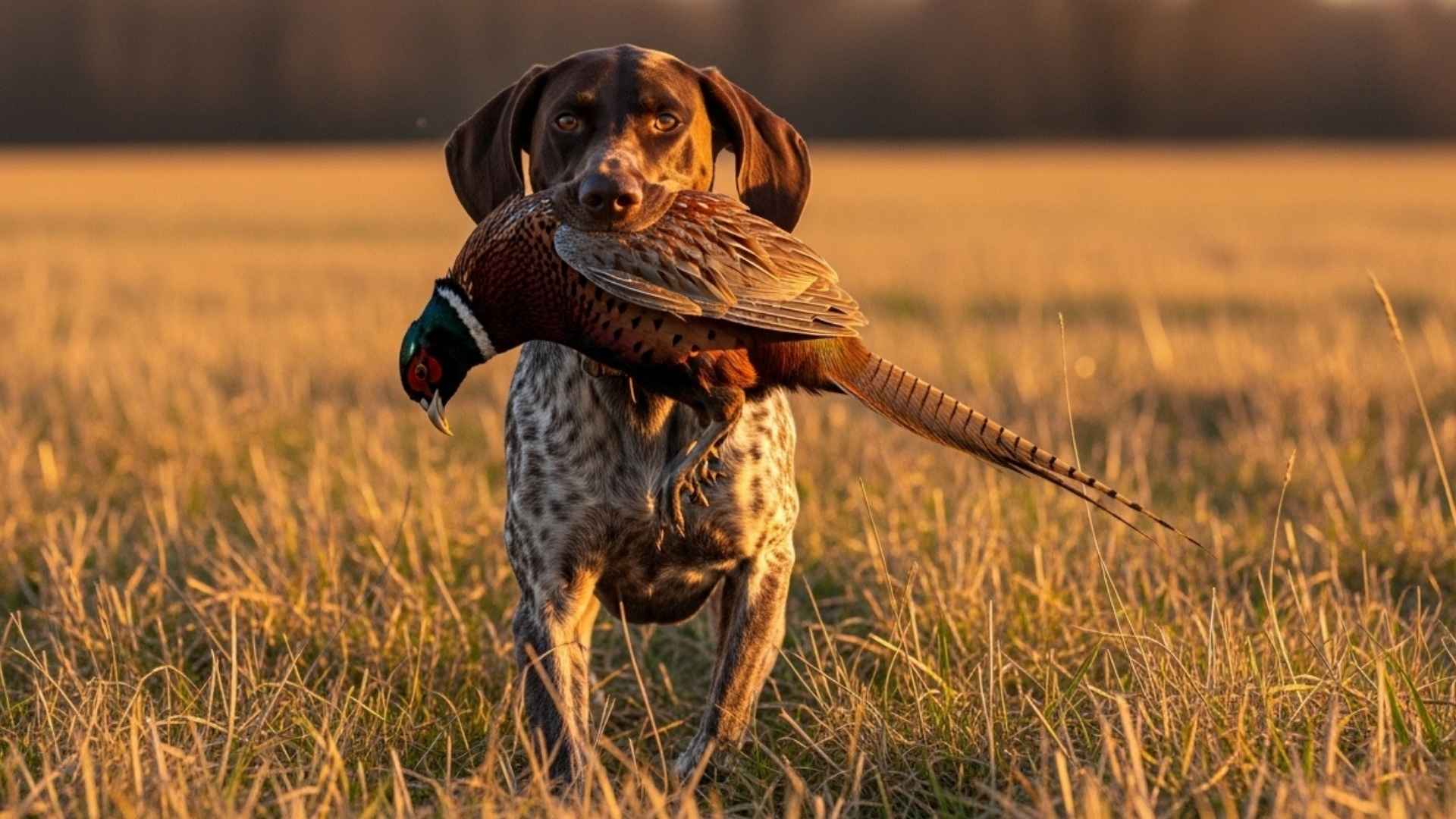Some dog breeds were specially developed to retrieve birds and small animals without causing any harm. These dogs have what’s called a soft mouth, meaning they instinctively know how to carry prey gently, without biting down hard. It’s a natural form of bite inhibition that makes them calm, careful, and trustworthy around both people and other animals.
Interestingly, puppies usually learn bite inhibition during play with other puppies, figuring out how to control their bite so they don’t hurt their littermates, as per ASPCA. This early social learning plays a huge role in how gentle they become as adults.
In this blog, we’ll explore the dog breeds that are known for holding prey without harming it—breeds that combine a strong prey drive with a natural softness. These dogs may still love to chase or hunt, but they’ve been bred to avoid damaging what they catch. That makes them a smart choice for families, homes with individual dogs, or situations where they’ll be living with cats, small animals, or other dogs.
Dog Breeds That Hold Prey Without Harming It
1. Basenji
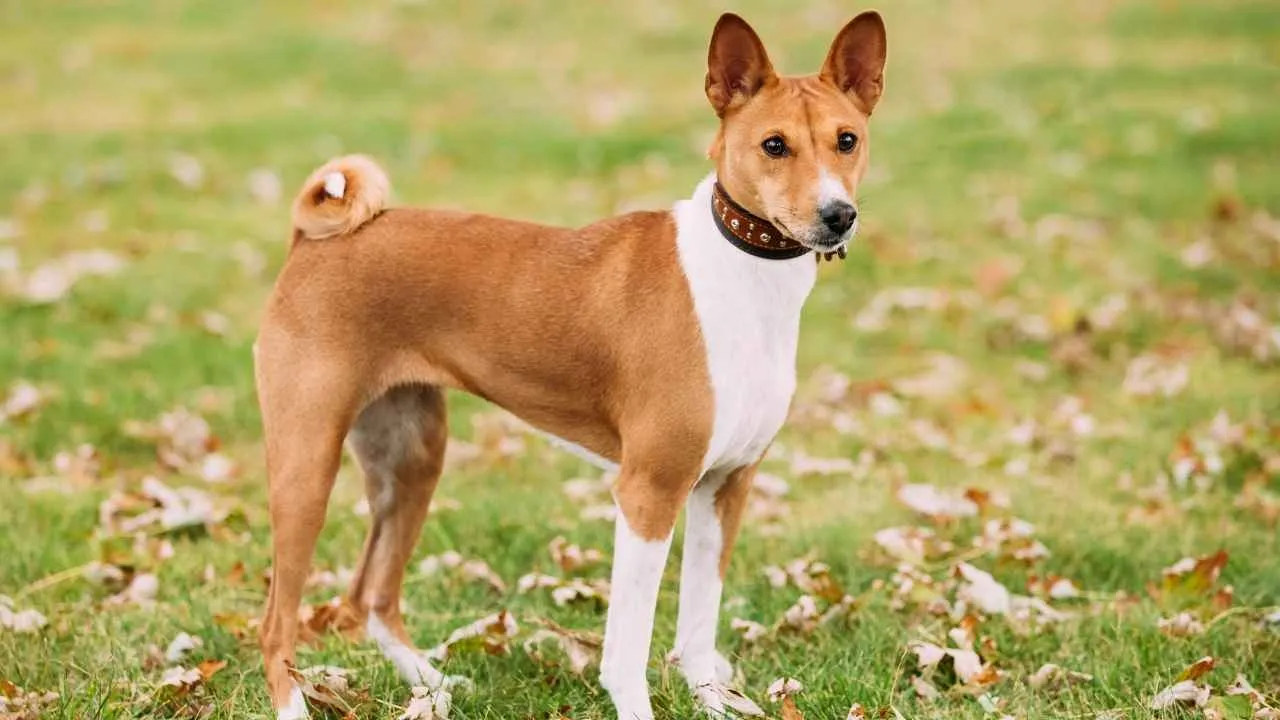
The Basenji, known as Africa’s “barkless dog,” is a small, elegant hound with a catlike personality. Instead of barking, it makes unique sounds—something between a yodel and a chortle.
With its short coat, curled tail, and wrinkled forehead, the Basenji is both graceful and expressive. They move with smooth, effortless strides and are naturally clean, often grooming themselves like cats.
Originally bred for hunting, Basenjis are fast, clever, and brave. These pups were trained to track and flush out prey without damaging it, using their agility and intelligence rather than brute strength.
Training a Basenji can be challenging. They don’t respond quickly to commands unless consistently taught with patience and positive reinforcement. Without structure, they’ll try to take the lead. But with the right guidance, they become loyal and fascinating companions.
2. Border Collie
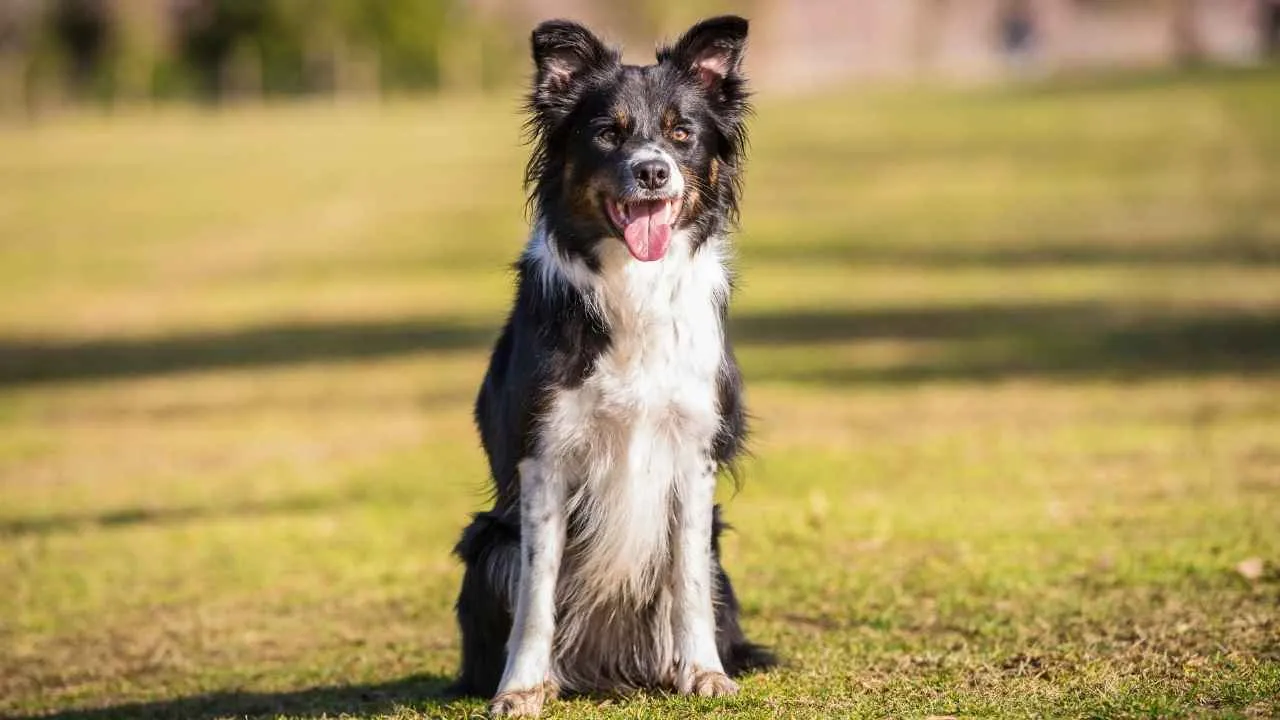
The Border Collie is widely regarded as the smartest dog breed in the world. Originally developed for herding sheep along the border between Scotland and England, they are highly alert, focused, and eager to work.
WebMD mentions that these herding dogs are known for their intense stare, called “the herding eye,” which helps them control livestock without needing physical contact. Their natural instincts allow them to respond quickly to commands and make decisions independently when needed.
Despite their high prey drive, Border Collies are bred to control rather than harm animals, using their body language, movement, and intelligence. This makes them a perfect example of a dog breed that can manage prey gently, guiding it without the need to bite or chase aggressively.
3. Irish Setter
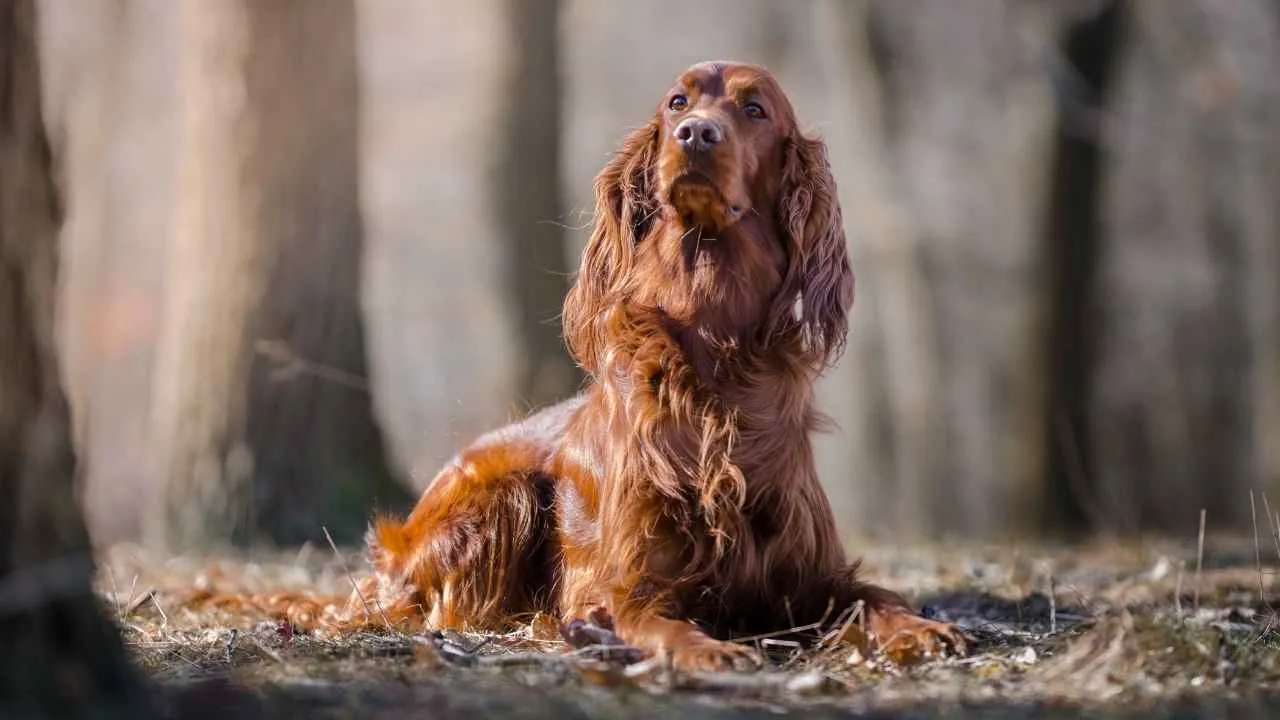
The Irish Setter is a graceful and energetic gun dog, best known for its striking red coat and swift, athletic build. Behind their elegant appearance lies a determined and rugged breed built for bird hunting.
Originally bred to track and signal the presence of game, Irish Setters are quick, alert, and enthusiastic workers. In the field, they use their powerful nose and stamina to locate prey, then indicate its position to hunters with a characteristic “set” or crouch.
Like other setter breeds, Irish Setters are known for their soft mouths, allowing them to retrieve birds without damage. This makes them an excellent fit for this list—they combine a strong prey drive with the control and gentleness needed to hold prey without harming it.
4. Jack Russell Terrier

The Jack Russell Terrier is a lively, fearless little dog originally bred for fox hunting in England. With boundless energy and a sharp mind, this compact terrier is always alert and ready for action.
Jack Russells were developed to chase and flush out small prey from underground burrows. Their compact build, strong prey drive, and persistence make them excellent hunters—but also a handful for inexperienced owners.
To keep them happy, they need plenty of mental stimulation, regular exercise, and a walk or two daily. Without activity and engagement, they may become destructive or overly vocal, as they naturally crave work and movement.
With the right training, Jack Russells can be loyal, fun-loving companions. They form strong bonds with their person and often aim to please, especially when guided with consistency and positive reinforcement.
5. Doberman Pinscher
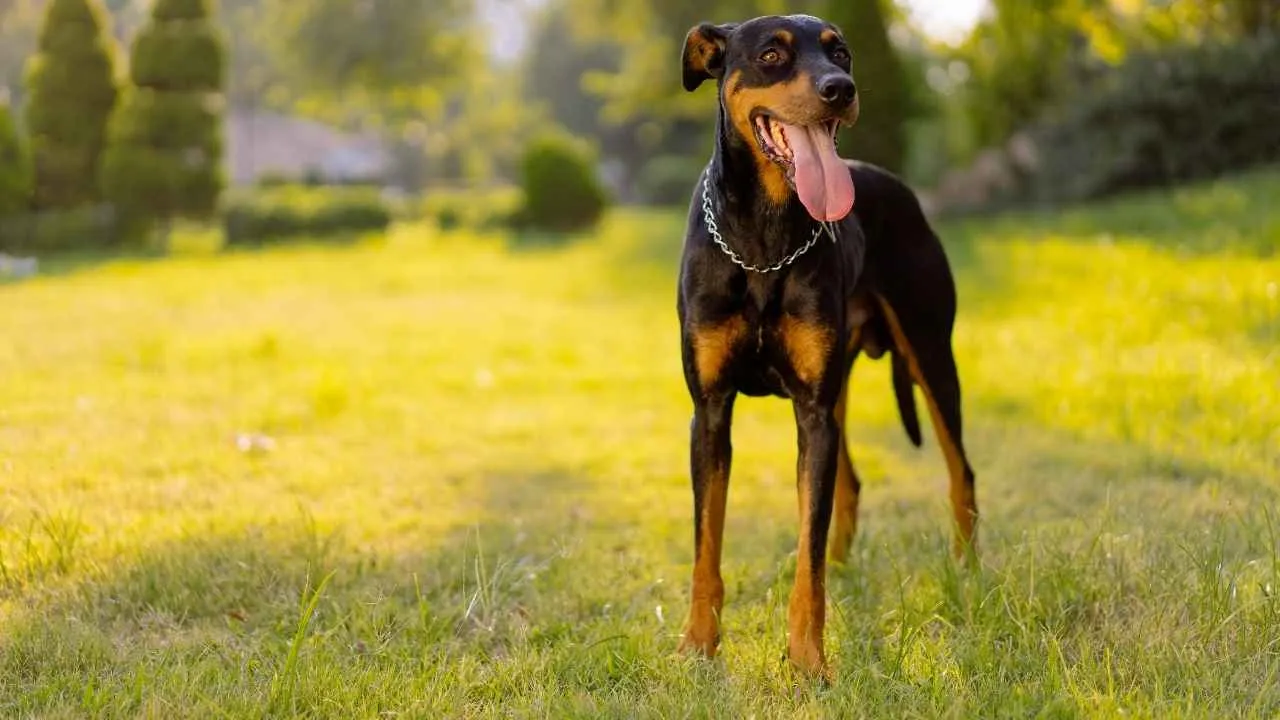
The Doberman Pinscher is one of the most iconic guard dogs, known for its strength, alertness, and loyalty. Originally bred in Germany for protection and patrol work, this breed has long been valued for its dedication to keeping its human companions safe.
Dobermans are also high prey drive dogs, meaning they have a natural urge to chase. This makes leash training and early socialization essential, especially in environments with other animals. Without the proper outlets, their drive and energy can sometimes lead to aggression, particularly if they feel threatened or unchallenged.
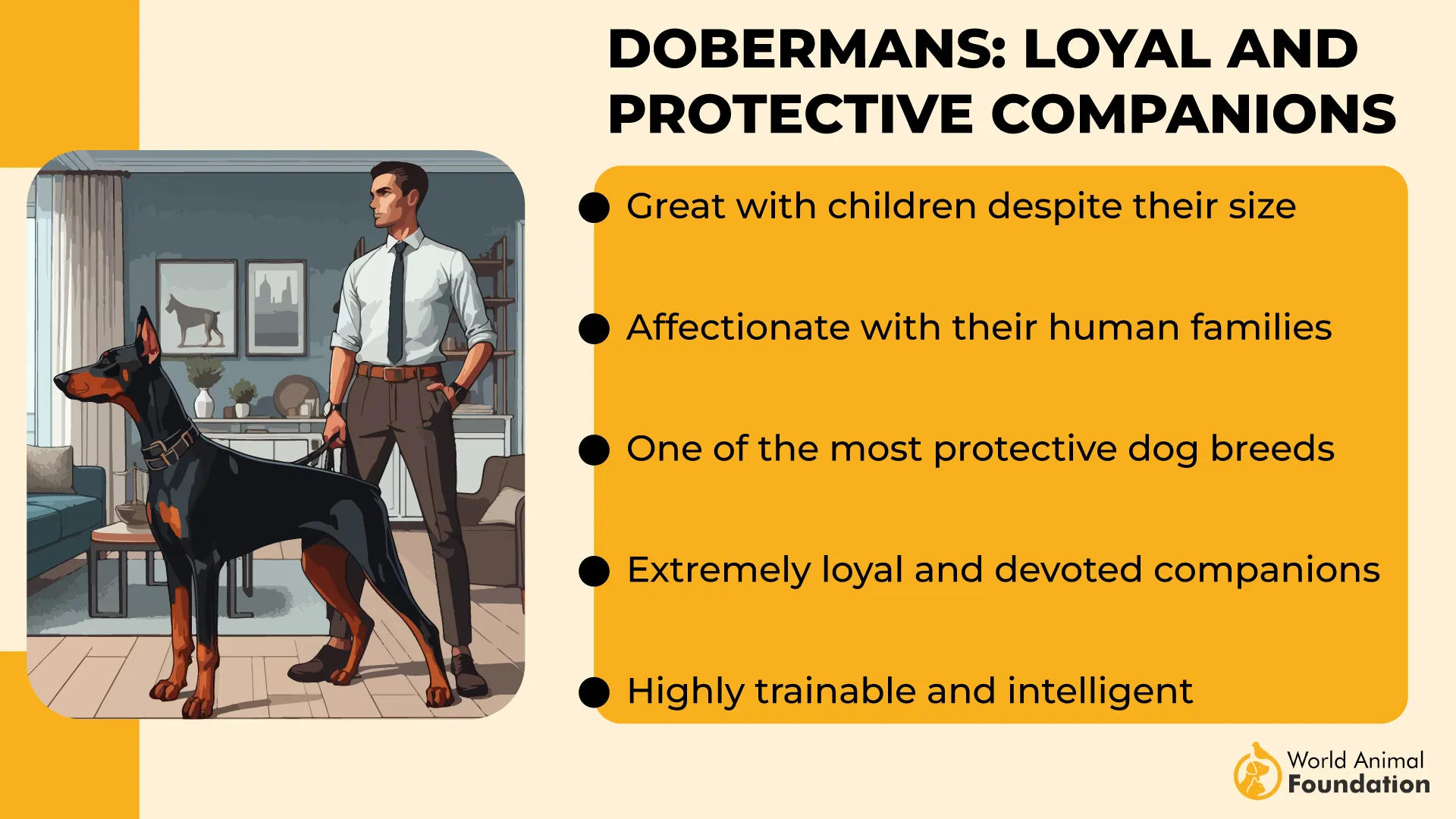
Despite their strong prey instincts, Dobermans are known to show control when handling prey, often detaining or holding it without immediate harm, especially when well-trained. Their intelligence and responsiveness make it possible to manage their instincts with proper direction.
6. Greyhound

According to Britannica, the Greyhound is best known as the fastest dog breed in the world, capable of reaching speeds up to 45 miles per hour. Originally bred for coursing predators and completing high-speed hunts, this sleek and athletic breed is built for speed, grace, and quiet strength.
Despite their racing reputation, Greyhounds are gentle, calm, and surprisingly low-energy indoors. They enjoy lounging peacefully around the house and form affectionate bonds with their families. Known for their sweet nature, they rarely cause trouble and are generally easy to live with.
Though not typically used for security, their sharp eyesight and awareness make them excellent watchdogs. They’ll notice anything unusual but are not prone to unnecessary barking or aggression.
Historically used to chase down predators like hares and foxes, Greyhounds were trained to pursue and pin rather than kill, showing a level of control that aligns with a soft-mouthed hunting style.
7. Afghan Hound
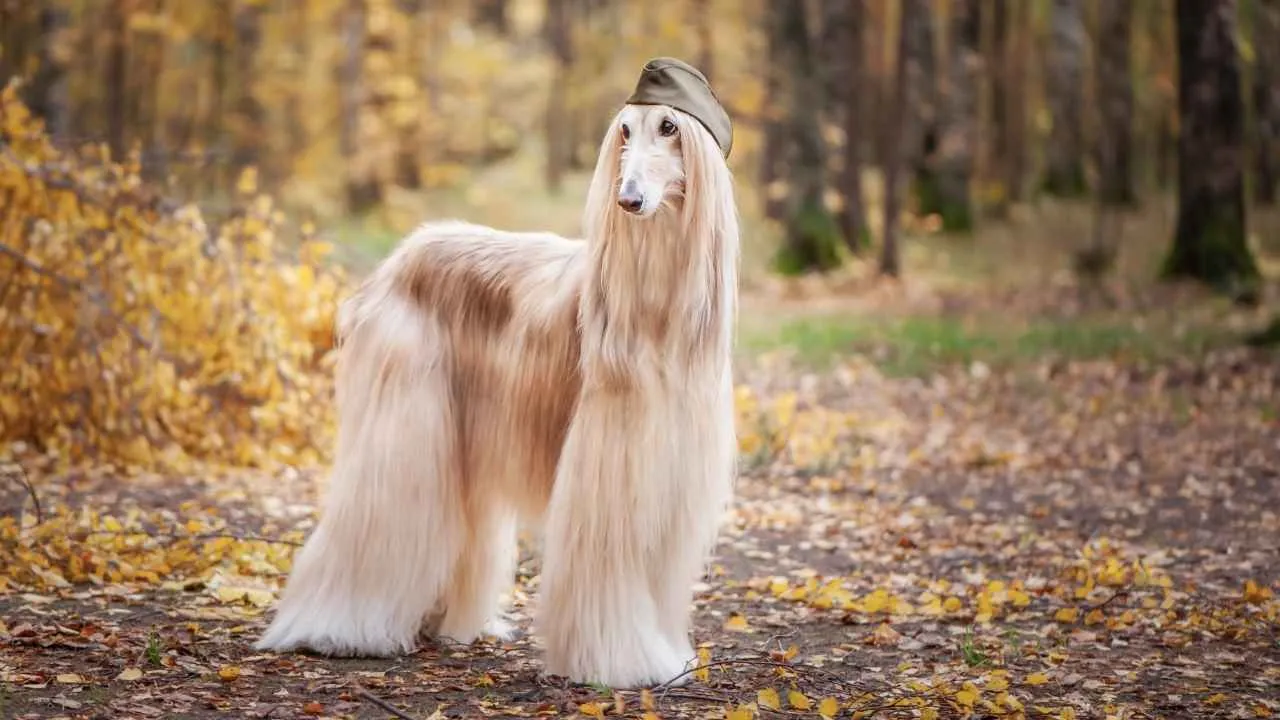
The Afghan Hound is a striking and elegant breed, best known for its long, flowing coat and proud posture. Originally bred in the mountains of Afghanistan, these dogs were used to hunt over rugged terrain, valued for both speed and independence.
With a narrow, refined head and a dignified demeanor, Afghan Hounds carry themselves with grace. They are intelligent but also famously aloof, often choosing when and how they show affection. Early socialization is important, and working with a responsible breeder helps ensure balanced temperament and proper early development.
In daily life, they are quiet and clean, but their hunting roots remain. They may be tempted to wander, so a secure fence is essential to keep them safe. While not overly food-motivated, they do respond well to rewards during training, as long as the food is high-value and offered with patience.
8. Alaskan Malamute
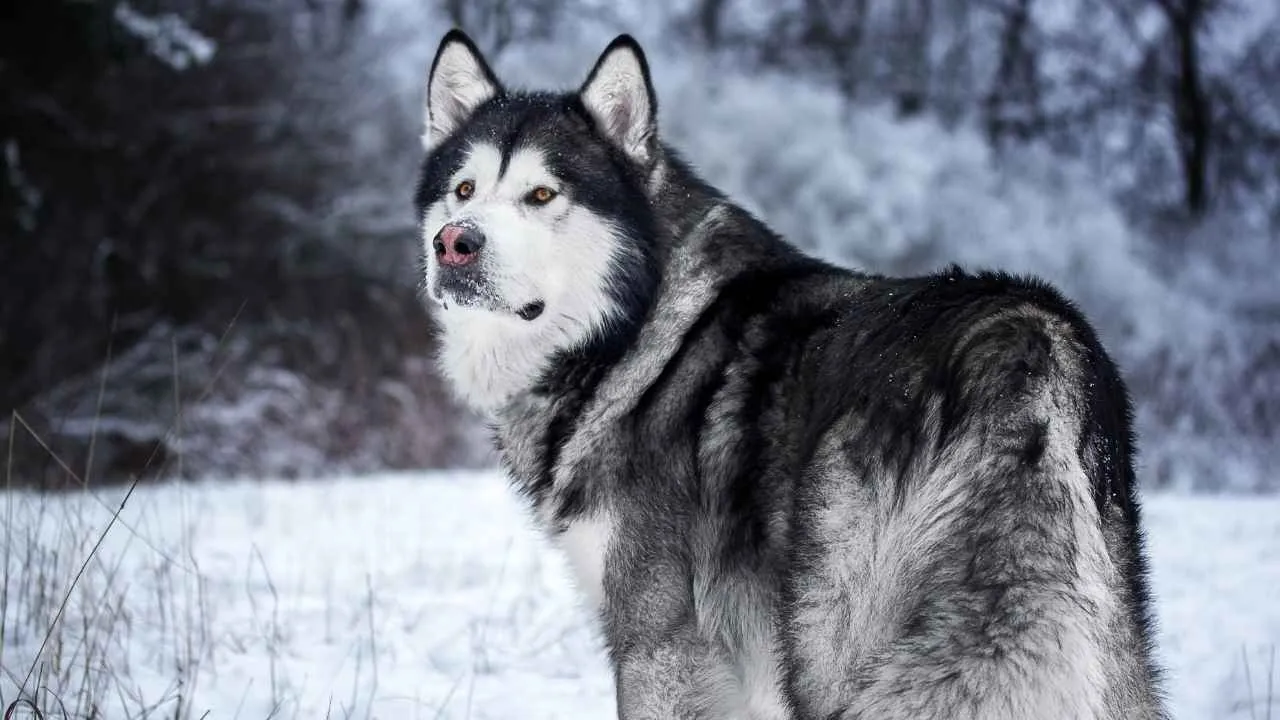
The Alaskan Malamute is a powerful, dignified sled dog with deep roots in Arctic history. These pups were originally bred as arctic sled dogs, came from Siberia, and were brought to the United States through the Bering Strait, where they became essential companions to the native Mahlemut tribe in northwestern Alaska.
These dogs were relied on to hunt, pull heavy loads, and even scare off wolves, all while working closely with humans in harsh, frozen environments. Their thick coats, strong frames, and serious endurance made them vital for survival.
Malamutes are pack animals that form deep connections with their families. They require early and consistent training to ensure mutual respect—otherwise, they may try to lead the household themselves.
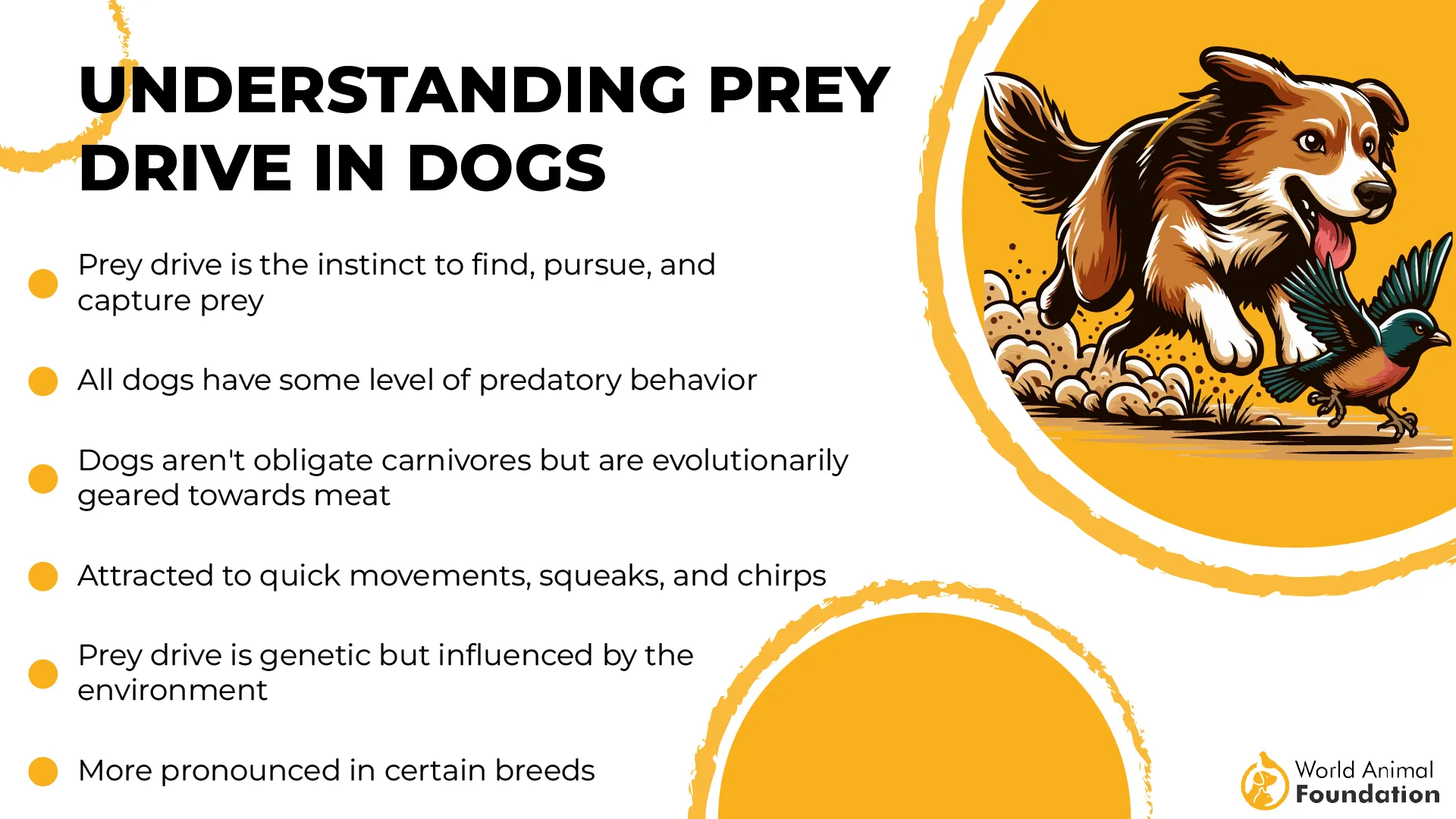
A key part of the dog’s prey drive in Malamutes comes from their history as hunting assistants. While they do have the instinct to chase, they were often expected to locate or hold prey without harming it. With proper direction, this control still shines through today.
9. Australian Cattle Dog
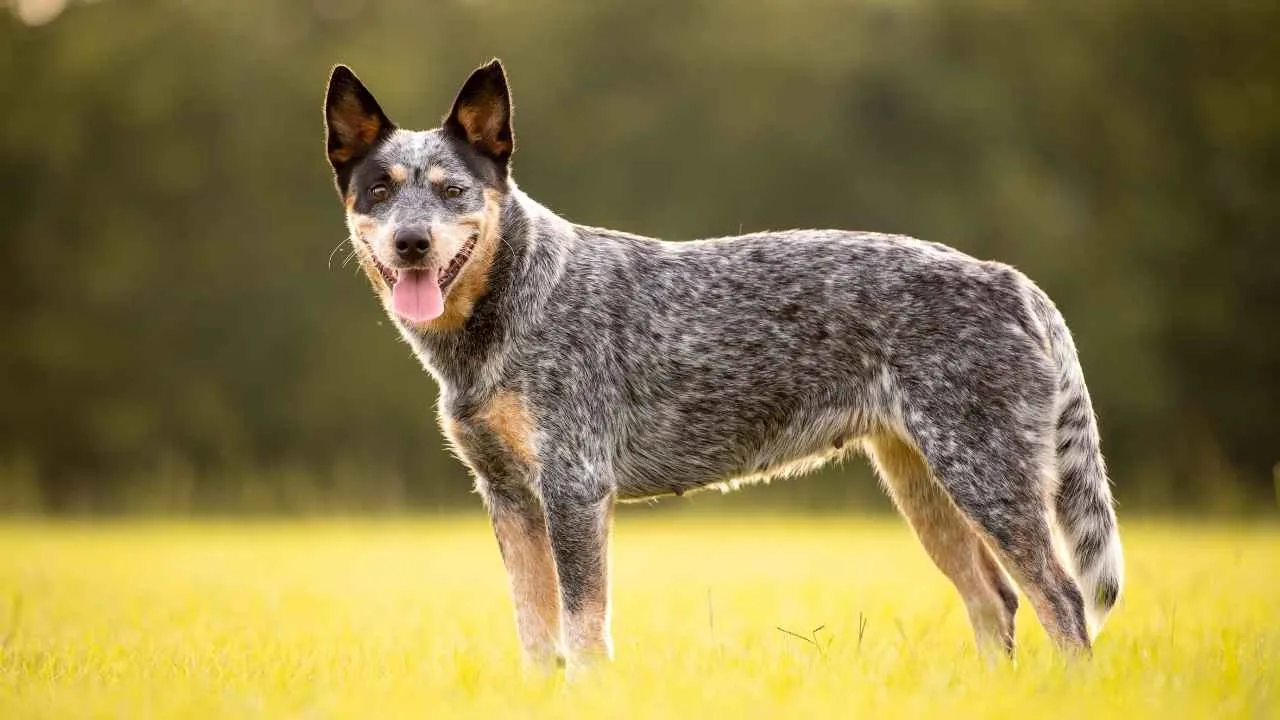
The Australian Cattle Dog is a tough, compact herding breed developed to handle livestock across the rugged Australian outback. PetMD says that they’re often referred to as “Heelers”—a name that comes from their instinct to nip at the heels of cattle to keep them moving.
Originally bred in the 1800s by crossing domestic herding dogs with native Dingos, Australian Cattle Dogs were made for long-distance work in extreme conditions. Their job required not just strength and speed, but also the ability to control animals without causing harm.
These dogs are alert, agile, and incredibly smart. They thrive when given structure and a task to focus on, whether it’s herding, obedience, or agility. Though naturally reserved with strangers, they’re loyal to their families and thrive on partnership and purpose.
10. Siberian Husky
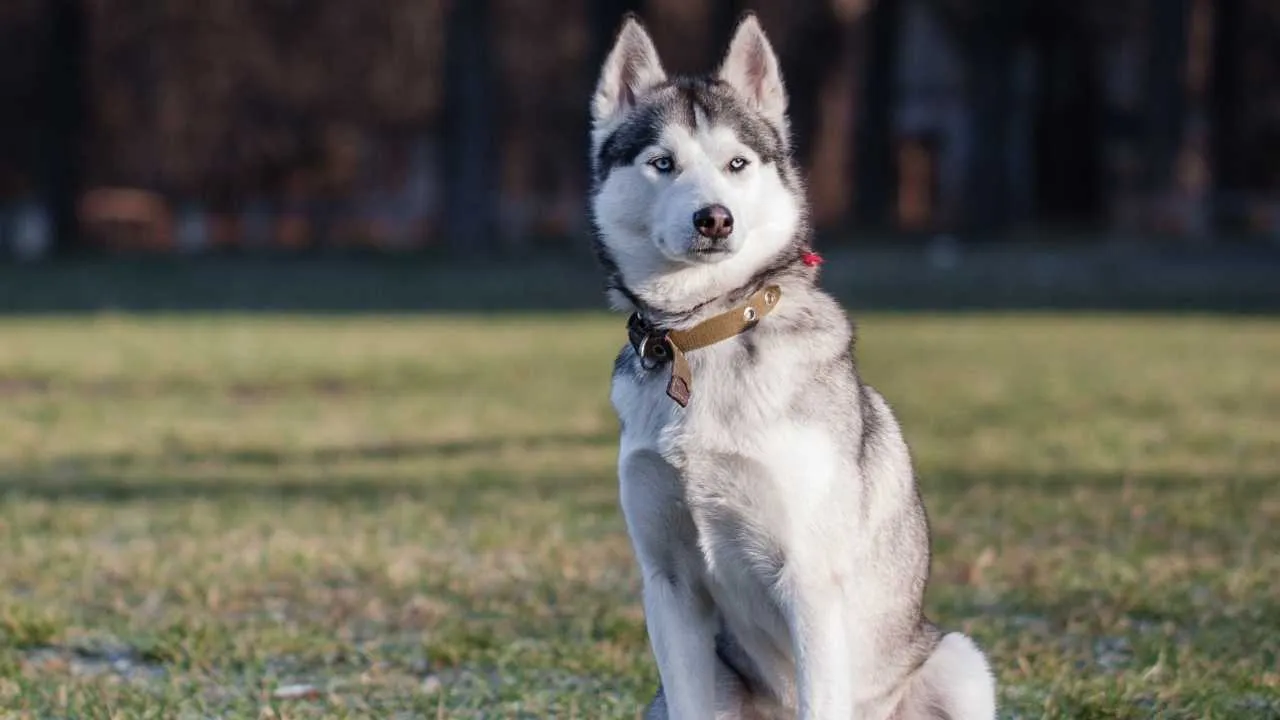
The Siberian Husky is a striking, medium-sized working dog known for its endurance, wolf-like appearance, and piercing eyes. Originally developed by the Chukchi people of Siberia, these dogs were bred to pull sleds over long distances in freezing temperatures with incredible speed and efficiency.
Built for stamina and teamwork, Huskies are energetic, intelligent, and highly social. They thrive in active environments and enjoy being around both people and other dogs. Though friendly by nature, they can be independent thinkers, which makes early training and consistency especially important.
Siberian Huskies are known for their expressive faces and signature vocalizations—they “talk” more than they bark. Despite their powerful build, they are gentle and playful companions who love to run, explore, and be part of a pack.
Conclusion
Choosing the right dog means understanding not just how they look, but how they think, act, and respond to their instincts. Some breeds were specifically developed to chase, catch, or retrieve without causing harm, showing that strength and gentleness can absolutely go hand in hand.
But there are other dogs as well that are known for holding prey without harming it. These include the Australian Shepherd, Labrador Retriever, German Shorthaired Pointer, Golden Retriever, Great Pyrenees, Beagle, and Pit Bull.
Whether you’re drawn to a quiet hunter, an intelligent herder, or a devoted companion, each of these breeds offers a unique blend of instinct and control. With the right guidance and care, they can become not just pets but trusted partners in everyday life.


